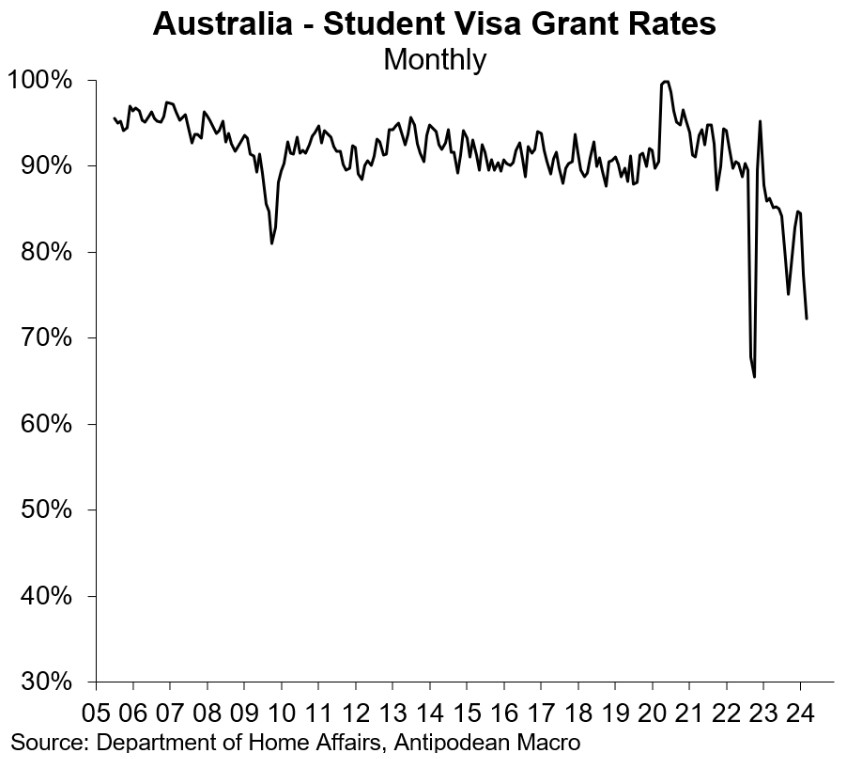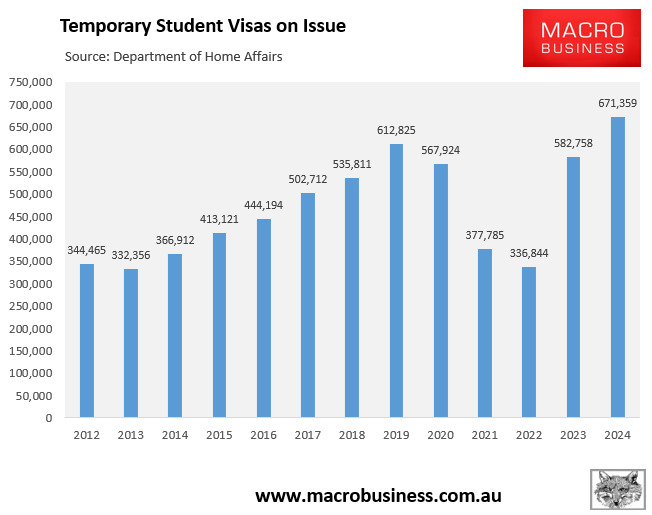The Albanese government’s soft “crackdown” on dodgy student visa applications has seen rejection rates rise, especially for second-tier educational providers:
According to the following chart from Justin Fabo at Antipodean Macro, student visa grant rates have sharply decreased this year, indicating lower numbers in the future:

This fall in student visa grants has been led by vocational education and training, followed by independent English-language courses:

This comes as student visa numbers hit a record high 671,400 in March, according to the Department of Home Affairs:

Graduate visa numbers also hit a record high 199,900 in March:

Combined, this means that roughly one in 30 people in Australia in March were on either a student visa or a graduate visa.
Now it has been revealed that rejected student visa holders are appealing en masse to the Administrative Appeals Tribunal (AAT) to extend their stays in Australia.
The number of international students lodging appeals against visa rejections has more than doubled in nine months, swamping the AAT.
Experts say much of the caseload is people using appeals as a means of delaying their mandatory departure from Australia after their current visa expired.
The spike in applications to the AAT coincides with a crackdown on student visas by the Department of Home Affairs. Student visa refusals accounted for 42% of all non-asylum cases to the ATT in the nine months to March, compared to 20% in 2022-23.
The total non-asylum caseload is up by 57%.
The situation is expected to worsen this year as the number of students in Australia booms and the refusal rate rises.
The Migration Institute of Australia chief executive Helen Duncan said a large proportion of people appealing were simply trying to extend their stay.
“The appeals process can take a very long time before an outcome can be reached with those people staying in Australia during the appeal”, she said.
“If they lose, they can then appeal to the Federal Court. It’s obvious that some people are using it as an avenue to extend this day in Australia”.
The boom in appeals to the AAT has seen the number of bridging visas rise sharply in the year to March to 286,300:

When visa holders do not want to return home, they call the immigration industry, which initiates the never-ending AAT process, allowing them to extend their stay in Australia and work.
Way back in 2019, former High Court justice Ian Callinan warned that migrants and agents “game the system, well knowing there is an automatic entitlement to a bridging visa”:
The ballooning number of AAT appellants costs Australian taxpayers dearly, with each migrant and refugee case reviewed by the AAT costing between $2000 and $3000 to review.
Clearly, student numbers must be capped at the front end before they arrive in Australia.
Otherwise, students will continue to lodge appeals and plead asylum from within Australia, clogging up the AAT and leading to non-genuine students remaining in Australia long-term.

